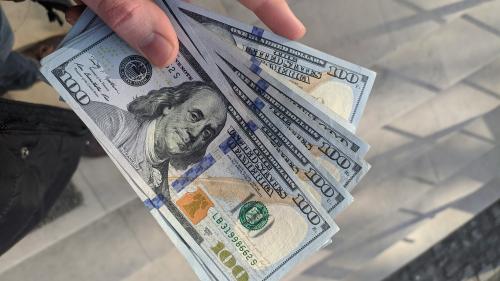Securities class actions are on the rise and non-US companies are firmly in prosecutors' sights
Recently, global securities class action litigation has been increasing in the US. The number of suits filed in federal courts increased nearly 92 percent in 2007 from the previous year, and the market witnessed a further 27 percent rise in 2008. With the onset of the world economic crisis and the rapid collapse of many financial and industrial giants, circumstances would suggest an even more rapid rise this year. However, some early data for 2009 indicate otherwise. This article explores the current trends in global class action securities litigation in US courts against foreign equity issuers.
How has the financial crisis affected the number of claims? Although the rate of filings today is less than it was at the peak of the crisis in late 2008, the number of foreign-defendant class actions remains 33 percent greater than during the same time period last year: 2008 saw 29 of these suits against non-US-based defendants.
Plaintiffs filed nine suits between the reasonably calm five months of January to May 2008, but filings jumped to 11 in the three months between October and December, when the tumult and uncertainty of the financial crisis was at is zenith. For the period of January to May 2009, however, plaintiffs filed 12 claims, closely approximating pre-crisis levels.
How does this growth compare with the wider context of all securities class actions, including those against US companies? The broader picture indicates a different conclusion. In yearly comparisons such suits show a precipitous decline, from 94 in the first five months of 2008 to 79 from January to May in 2009, a drop of 16 percent. But while total suits dropped substantially, claims against foreign firms continued to climb rapidly.
Strong appetite for foreign fare
How has the balance of foreign and domestic suits shifted? Historically, the relative mix included a much smaller percentage of suits against foreign-company defendants. In 2000 these suits comprised only 7 percent of the total. By 2004, however, such actions had risen to 14 percent.
This compares with 14 percent in 2008 and 15 percent in the first five months of 2009. The data show the financial crisis has not dampened attorneys’ willingness to bring such suits against foreign companies even though conventional wisdom might initially assume US firms would be more likely to be defendants, given that the financial crisis began in America.
Which foreign industries have been most likely to be sued? Not surprisingly, suits against financial services companies have been particularly prevalent in the last several years. These claims made up 28 percent of foreign-equity class actions in 2008 and a whopping 58 percent in 2009. Natural resources firms and agricultural companies have also been targets. This development is not unexpected given the rapid run-up and then substantial fall of commodity prices and, subsequently, the stock prices of those firms. Insurance, manufacturing and technology companies have also been sued multiple times in the past year and a half.
Where are the foreign defendants headquartered? Western Europe is home for many of them: 18 of 41 defendants (43 percent) are headquartered there, with Switzerland (seven) and the UK (six) leading the league tables. Every other country in continental Europe had two or fewer suits filed against its firms. North America also hosts eight company-defendants, with seven of those headquartered in Canada and one in Mexico. Other countries with multiple suits against their firms include China (four), Brazil and Bermuda (two each).
Which exchanges list the companies defending actions? The NYSE is the most popular exchange, with 58 percent of the 2008 and 2009 company-defendants trading there. Interestingly, NASDAQ and the American Stock Exchange each host about 7 percent of the companies involved, even though NASDAQ has more than 80 times the market capitalization and six times the number of companies listed. The remaining companies are either private or trade over the counter, through other exchanges or as pink sheets.
Grounds for complaint
What grounds form the bases for these claims, and where are they being brought? These securities cases were all commenced under Sections 11, 12(a)(2) and 15 of the Securities Act of 1933 (for public offerings of securities) or under Sections 10(b) and 20(a) of the Securities Exchange Act of 1934 (for fraud in the securities markets). In 2008 the public offering suits made up virtually all of the claims against non-domestic companies, with 24 out of 29 claims (83 percent) being made under that act. The other five actions (17 percent) were made under Rule 10b-5.
The Southern District of New York is the venue most plaintiffs – more than 80 percent – choose to litigate these actions. This is an obvious choice as these are securities suits and most of the major exchanges are located in New York. Additionally, foreign companies often have offices in New York.
What precipitates a suit? For shareholders, a substantial decline in the share price appears to provide the motivation for many plaintiffs to commence an action. There are data available for 33 companies that have been sued in 2008-2009. Only three had a share price decline of less than 25 percent, 13 companies had share price declines between 25 percent and 49 percent, and 17 defendants suffered price declines of 50 percent or greater. The data indicate, therefore, that investors are tolerant of smaller declines and price fluctuations, but the larger the swing, the more likely the foreign company will end up being sued.
Individual shareholders brought the vast majority of these cases as lead plaintiffs. From a total of 41 cases, however, pension or retirement funds commenced nine suits (21 percent).
Access to the US equity markets can bring numerous benefits for firms worldwide: prestige, more capital at a lower cost, enhanced networking opportunities and greater interaction and visibility with potential customers and partners. Such access can also bring significant potential liability and costs, however, and companies should seriously weigh these factors in their decision to enter the US capital markets.








